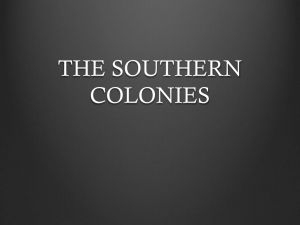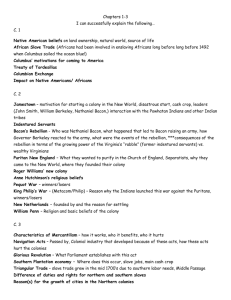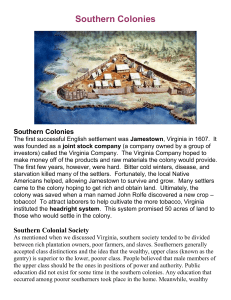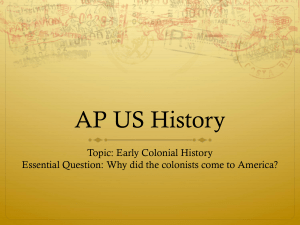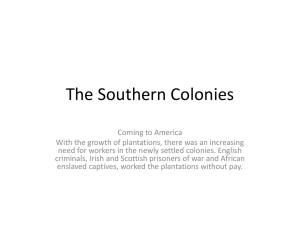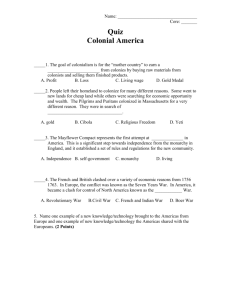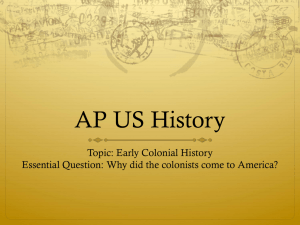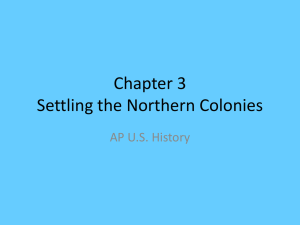Chapter 2: Section 2 The French Empire
advertisement
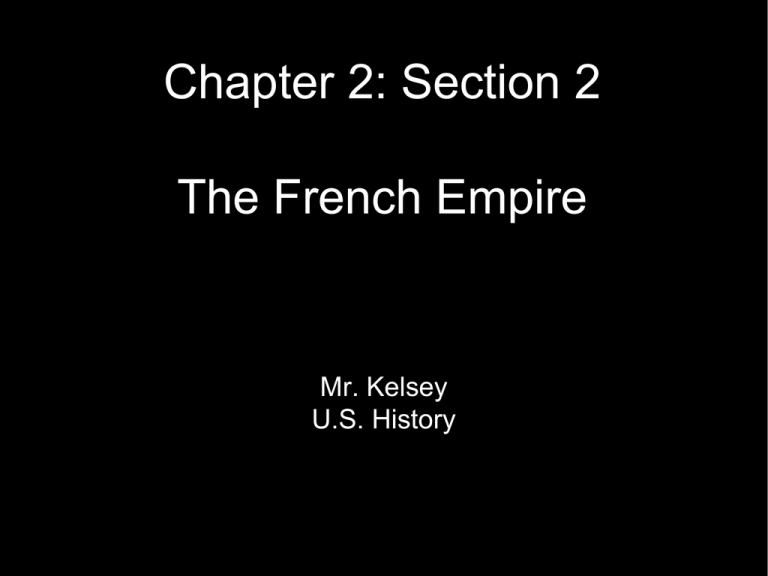
Chapter 2: Section 2 The French Empire Mr. Kelsey U.S. History The French Empire • • Spain was the first European country to explore North America but France followed French settlers focused on Northern US and Canada along the St. Lawrence River The Northwest Passage • • Primary focus of French explorers was the Northwest Passage: a water route to Asia through N. America Led to exploration of the St. Lawrence River Establishing New France • • • French King claimed the area around the St. Lawrence River Settlers survived by fishing and hunting whales and seals Met Indians and traded tools for furs - lots of $ back in Europe • • • Indians fought each other to provide supply Europeans fought each other over furs that could be bought Quebec: Major Canadian city established as 1st permanent settlement and trading post French-Indian Relations • • • French life depended on Indians hunting and trading Low numbers, didn’t attempt taking land/enslaving Samuel de Champlain: Founder of Quebec and ally to Indians. Helped trading partners attack foes. • • • Used guns (advanced technology at the time) Helped their allies but angered others Increased fighting among native tribes Expansion to Louisiana • • • Late 17th Century, French continued to look for Northwest Passage One trip brought them down the Mississippi River to the Gulf of Mexico Claimed the area around the Mississippi River for France • • • • Named Louisiana after King Louis XIV Largest city at the river mouth - New Orleans Swampy land = bad for farming, promoted disease Used as a military base to keep England from moving West Chapter 2: Section 3 England’s Southern Colonies England’s First American Colonies • • Queen Elizabeth I and wealthy English proposed sending poor to North America to mine for gold/silver and grow crops Groups obtained charters: certificates of permission, and formed a joint-stock company: a business run by a group of investors who share profits • • One of these investors was Sir Walter Raleigh These joint-stock companies ran the first British colonies • One of the most famous was on Roanoke Island • • The 1st group failed and returned home The 2nd group disappeared (video) Jamestown • • • • Jamestown considered the first successful Southern colony • 10,000 people brought over from 1607-1622, only 20% survived Fighting with Indians, then uneasy peace • Powhatan’s daughter, Pocahontas, converts, marries John Rolfe Virginia Company allows colonists to own land • • • Named for King James I Rolfe helped teach how to grow tobacco England makes money on import back home Virginia Company offers free land to those who can make it to America, population grows House of Burgesses • • Virginia Company allows political reforms Planters (colonists) create the House of Burgesses: the first representative body in colonial America • • • • Male landowners over 17 voted for two “Burgesses” to represent their settlement House made laws and raised taxes 1624, British government takes control of Virginia from Virginia Company, becoming a royal colony: a colony that belonged to the Crown Proprietary colony: owned by an individual or company Bacon’s Rebellion • • Royal Governor in Virginia imposed heavy taxes that favored the wealthy Nathaniel Bacon (1676) led a rebellion against the governor, slaughtering hostile and peaceful Indians • • • Made already uneasy relationship with Indians worse Bacon died suddenly and rebellion failed Showed that poor farmers wouldn’t take unfair government • Taxes reduced, frontier policies made easier Other Colonies (Besides Virginia) • • • Maryland • • Overseen by Lord Baltimore Founded as a refuge for Catholics discriminated against by Protestants in England • More Protestants end up coming, conflict arises Carolinas • • Belonged to British aristocrats Eventually split into North and South in late 17th, early 18th century and taken over by the Crown Georgia • • • Started as a proprietary colony to protect against Spanish in Florida James Oglethorpe turned it into haven for debtors, strict rules on work and life Became royal colony in mid 18th century



